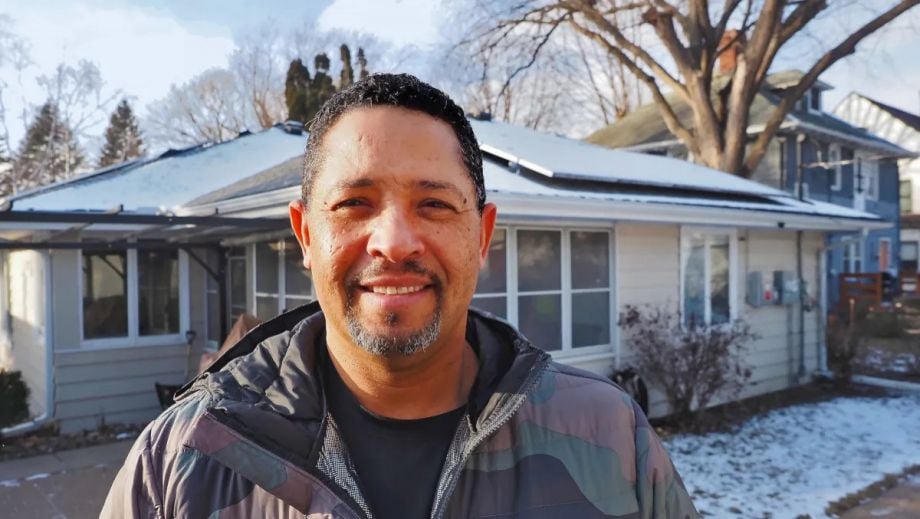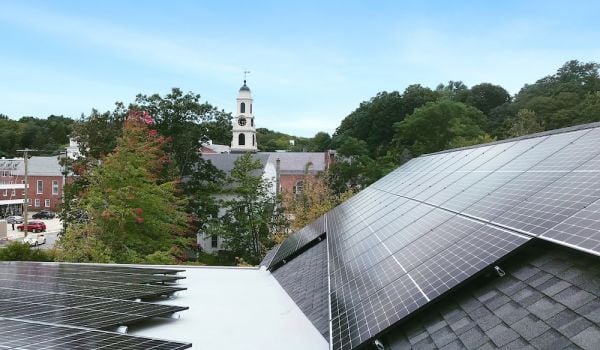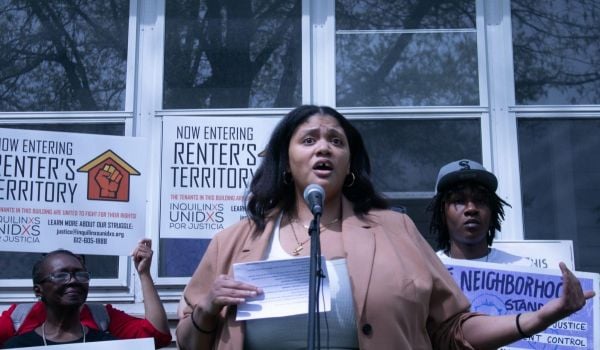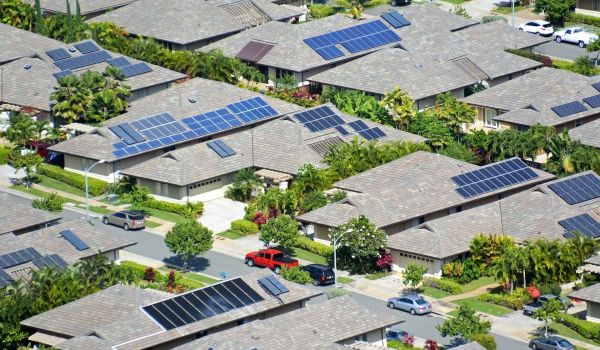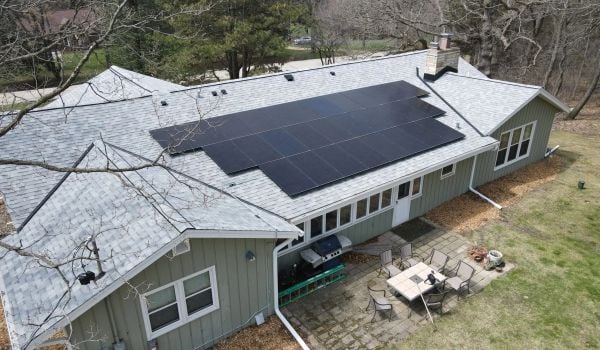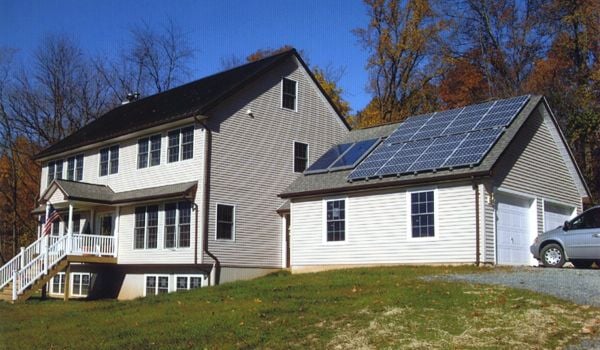One installation at a time, a solar nonprofit that matches socially conscious investors’ cash with lower-income homeowners is spreading the benefits of solar in North Minneapolis.
Solstar was formed three years ago by solar entrepreneur Ralph Jacobson following his retirement from IPS Solar, the pioneering Twin Cities’ solar company he founded three decades ago earlier.
In his entire career, “I hardly ever had Black customers or Black subcontractors,” Jacobson recalled.
Solstar is a collective effort for clean energy leaders in North Minneapolis to address those racial disparities.
Jacobson, 71, works his network to persuade wealthy individuals to invest in residential solar installations. Kristel Porter, a well-known community activist, recruits low- or moderate-income homeowners who are interested in having solar on their homes. J.T. Thomas of the Black-owned Go Solar Construction trains and supervises students who help install the projects.
Solstar takes care of applications for all of the available incentives. Homeowners pay nothing and immediately benefit from a lower monthly electricity bill.
“It’s a no-brainer,” said Jacques Beech, who signed up with Solstar and now has solar panels on the roof of the 2,700-square-foot ranch home he shares with his wife and two kids.
His electricity bill so far has dropped by around $100 a month.
‘It has been harder than expected’
The model is working, though slower than Solstar’s founders would have hoped. The nonprofit initially wanted to finish 24 projects in its first two years. Instead, it’s completed ten and expects to hit the two dozen mark later this year.
“We found it has been harder than expected and needed a different skill set,” Jacobson said.
Among the challenges were managing investors, timing projects around incentives, convincing skeptical homeowners the offer wasn’t too good to be true, and keeping trainees employed in the still sporadic industry.
Solstar’s financing is complex. The nonprofit pays for installations by attracting investors and offering them a modest rate of return. Three major equity investors take advantage of the tax credits and depreciation on the projects. Solstar’s microlenders do not get tax credits but instead receive 3.5% on investments ranging from $5,000 to $50,000.
Solstar investors reduce their taxes by taking advantage of the 30% tax credit and a six-year depreciation schedule on solar projects. After exhausting tax incentives, Solstar plans to sell the solar systems to their commercial and residential customers at a significantly reduced price. Clients hosting Solstar panels on their roofs receive discounts on their electricity by as much as 20% and, in some cases, more.
Jacobson reduces his costs by taking advantage of other programs. Every project is sized up to 120% of the client’s electricity use, the highest amount allowed under Xcel Energy’s Solar Rewards incentive program. Solar Rewards pays more per kilowatt hour for participating low-income households. A production incentive from the city of Minneapolis’s Green Zone program adds another layer of support.
None of this is easily absorbed by investors or clients. Jacobson quickly discovered interested investors, but many would require multiple conversations and several weeks of consideration before betting on his new program.
Eventually, crowdsourcing cash paid off. “I certainly developed a bit of a following, a little community of maybe 70 to 75 people, who have put money into these projects,” he said.
One of those is Eric Pasi, a former partner at IPS Solar who now runs the community solar company Enterprise Energy. He saw an opportunity to move solar beyond helping reduce energy bills of middle- and upper-class clients to a BIPOC mixed-income neighborhood.
“We love projects like this because for a modest investment the impact for these projects is so great,” said Pasi, who is also a board member of Fresh Energy, which publishes the Energy News Network.
Job-training challenges
After Solstar began knocking on doors of North Minneapolis residents in early 2021, Jacobson discovered the annual budget for Xcel’s Solar Rewards program had already run out of money for the year. Porter kept marketing Solstar and speaking to potential clients to prepare installations for 2022 and 2023.
The Solar Rewards issue was just the start of problems. “I didn’t realize we were going to run into as many potholes as we ended up running into,” Porter said.
Some homeowners sat on the fence, not making a final decision for months. At least four who signed up in 2023 delayed solar projections because they needed new roofs after an August hail storm.
Trying to pay professional contractors and their trainees became expensive and “tricky and financially just too much,” Porter said.
Solstar eventually broadened the contractor pool beyond Go Solar to finish projects within the Solar Rewards deadlines. If a project does not meet deadlines, Solstar would have to reapply for Solar Rewards the following year “and go through the whole process again,” Porter said.
Other projects were slowed when Xcel laid off several employees who were familiar with Solstar and its model.
Solstar’s job training pipeline has also run into hurdles. Thomas onboards students from training programs offered by the city of Minneapolis and partnering institutions such as the Regional Apprenticeship Training Center. Four students who received classroom training then worked with Thomas on Solstar projects.
Some students struggle with getting transportation to installation jobs, he said. Training is often scheduled so far in advance that job opportunities may not be immediately available when students finish their classes.
Many students can’t spend a month or two waiting for a job, Thomas said, and when a job emerges, they may not be available because they are already working.
“It’s taken a while to ramp up, but now it seems like the jobs are trickling in and we’re getting the processes down,” he said. “Hopefully, as we go on to it next year, it will be a little more seamless.”
Replicating the model
Still, according to attorney Jeremy Kalin, the program’s approach and hard-won success means that other nonprofits could use the same approach. His firm, Avisen, has worked with similar programs in Maryland and others are starting in Arizona, Georgia and New Mexico.
The difference between Solstar and those initiatives is that Jacobson recruited wealthy investors who could take advantage of the tax credits and depreciation. Nonprofits in other states will use the Inflation Reduction Act’s “direct pay” option rather than rely on investors. The act allows nonprofits and government agencies to receive tax credits as cashback from the IRS.
Nonprofits using direct pay did not have a way to “monetize the depreciation deduction,” but “they have a simpler task because finding tax credit investors with the right kind of taxable income is hard,” Kalin said.
Jacobson has not determined whether Solstar will continue the same structure or lean into direct pay. He said several early investors in Solstar and a separate initiative he helps lead in the Red Lake Indian community want to continue participating in Solstar.
Early customers like the program. Beech said he would have never made such a significant investment with such a long payback without the program. “It’s not a cost-effective thing, unless you just have the money, which I don’t,” Beech said. “This is an affordable way to do it.”
After completing the first iteration of Solstar, Jacobson wants to start another limited liability company and start recruiting 24 more homes and small businesses. “If White people can build wealth by owning solar, then I guess Black people should be able to build wealth by owning solar, too,” he said.
This article was originally published by Energy News Network.
Frank is an independent journalist and consultant based in St. Paul and a longtime contributor to Midwest Energy News. His articles have appeared in more than 50 publications, including Minnesota Monthly, Wired, the Los Angeles Times, the Minneapolis Star Tribune, Minnesota Technology, Finance & Commerce and others. Frank has also been a Humphrey policy fellow at the University of Minnesota, a Fulbright journalism teacher in Pakistan and Albania, and a program director of the World Press Institute at Macalester College. Frank covers the state of Minnesota.

